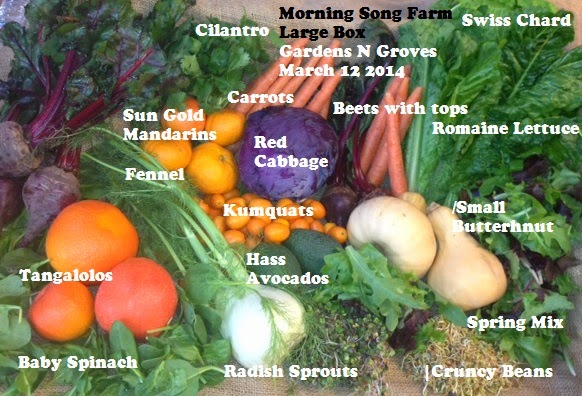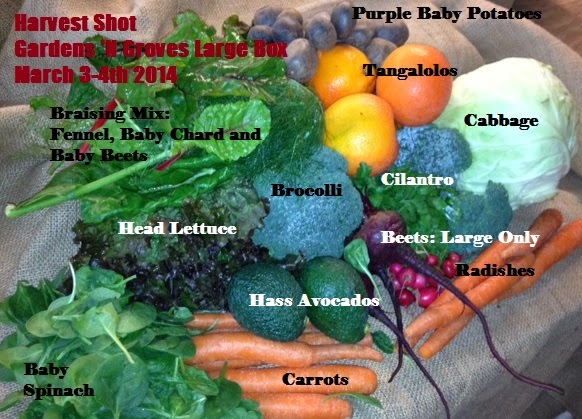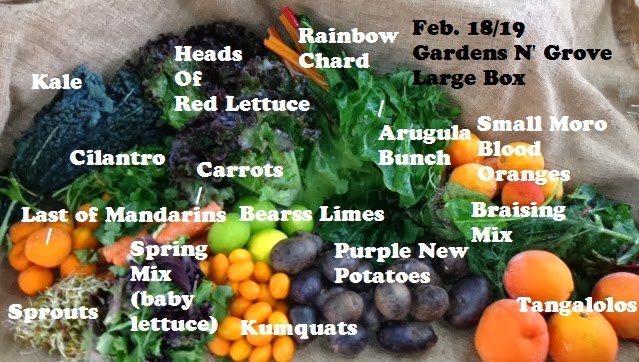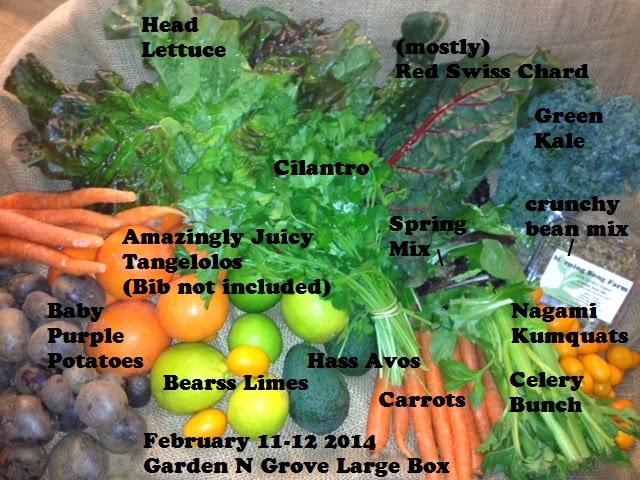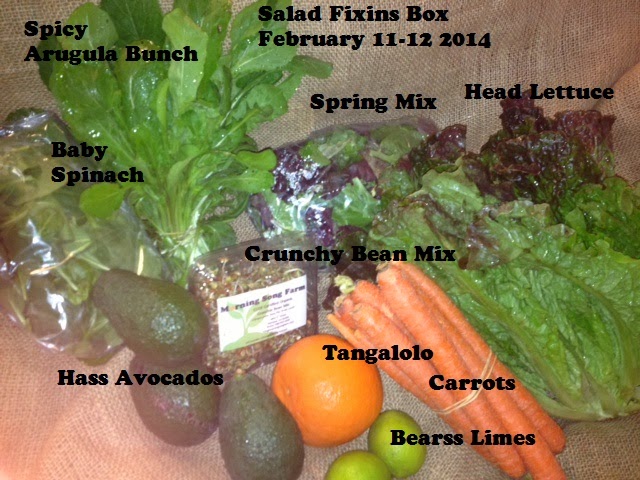Harvest shot for this week. We lost much of our early mulberry crop to unseasonably windy nights. Just such a disappointment to see so much of our beautiful fruit on the ground. Squeaked by with very small portions for all Large Shares this week from our earliest trees. We do have half an acre of later fruit coming in, and look forward to a less meager provisions.
We’re just beginning to harvest our heirloom red beets this week, Large Shares are getting our thinnings, so that we can clean out the rows…allowing the rest to grow larger. There is Swiss Chard in all Large shares, that is missing from this photo.
 As our little CSA has grown, the complexities of keep it all straight have grown as well. We have 50 drop points, mostly weekly, although there are three that are only biweekly. There are those that receive boxes weekly, but add-ons biweekly. (We don’t offer vice versa) There’s Large Boxes, Small Boxes, and Salad Boxes, both with and without eggs. There’s vacation skips for weekly subscribers, much appreciated, Please-Shift-Our-Box to the homeless shelter for biweekly vacationers (and some generous weekly subscribers’ donations), credit card number changes, cancellations at the end of commitments, new starts, delayed starts, restarts, and lots of on-going, uncommitted trials starting and stopping. As the roster-builder-change-order taker here, besides the lead farmer, I spend a full day each week combing through my email accounts in search of Change Order Requests…and there’s no way I can ever go on a real vacation, because this task is so complicated only I can do it. Oh, and there’s the challenge of usually… a newcomer… that leaves voice messages or notes on rosters (that I never see) or post-it notes mailed with checks, etc., submitting change orders…. although I’ve always asked that all change orders come to one place, our csa@morningsongfarm.com email account. I can’t even imagine trying to keep it all straight if I had to comb through voice mail, snail mail, scribbled on rosters and random post-its…in addition to email accounts to keep it all straight.
As our little CSA has grown, the complexities of keep it all straight have grown as well. We have 50 drop points, mostly weekly, although there are three that are only biweekly. There are those that receive boxes weekly, but add-ons biweekly. (We don’t offer vice versa) There’s Large Boxes, Small Boxes, and Salad Boxes, both with and without eggs. There’s vacation skips for weekly subscribers, much appreciated, Please-Shift-Our-Box to the homeless shelter for biweekly vacationers (and some generous weekly subscribers’ donations), credit card number changes, cancellations at the end of commitments, new starts, delayed starts, restarts, and lots of on-going, uncommitted trials starting and stopping. As the roster-builder-change-order taker here, besides the lead farmer, I spend a full day each week combing through my email accounts in search of Change Order Requests…and there’s no way I can ever go on a real vacation, because this task is so complicated only I can do it. Oh, and there’s the challenge of usually… a newcomer… that leaves voice messages or notes on rosters (that I never see) or post-it notes mailed with checks, etc., submitting change orders…. although I’ve always asked that all change orders come to one place, our csa@morningsongfarm.com email account. I can’t even imagine trying to keep it all straight if I had to comb through voice mail, snail mail, scribbled on rosters and random post-its…in addition to email accounts to keep it all straight.
I absolutely have to do something about the imperfect system as we’ve grown.
Sooooo…I’ve come up with the plan that I think is going to reduce the hours involved in keeping Change Orders organized, and gives our subscriber the satisfaction of a paper trail. I’ve created a secure Change Order Form that’s easy to click and send, with plenty of space for comments if needed.
Please use my new improved, 3rd party secured, Change Order link, and let me know if you have feedback on ways I might improve it. I will continue to appreciate emails and the friendly exchange of ideas that many of the farm’s subscribers maintain with me, but when a note includes a Change Order…I will direct that part of our communication to our link so that all Change Orders end up in one place each week for easy management.
We’ve worked for quite a while now on our livestock “fodder” system, which is a simple, automated hydroponic system that grows grain for feeding chickens, goats, etc. It’s been a little more complicated than we had hoped, as suppliers of some barley provide grain that sprouts poorly (why?) and we weren’t able to ascertain in the beginning if the problem was our system or their seed. Now we have a baseline of reasonable expectations, so we know if seed is good or not right away.
 The system itself is so tinker-toy simple, that at first I thought we’d be up and running in days. Ha! Like all things Morning Song, that which seems so simple is never thus. The system is humidity and heat sensitive, and because we set it up in our greenhouse, near the chicken barn, we had chicken-related seed theft that baffled us for weeks, on top of automated watering malfunctions that plagued us from the start. From time to time an occasional chicken flies the coop and pecks around the farm. A few ringleaders discovered the fodder system’s treasure trove of sprouted seeds during an unauthorized foraging adventure. Chickens love seeds, sprouts, and tender leafy greens. So it doesn’t get much better than a barley sprout for a chicken on the lam. It didn’t occur to me in the beginning that the guilty-sprout-stealing parties were chickens. The system is off the ground, and each tray has little access for an animal that flies, plus the system was INSIDE the greenhouse and getting inside requires either an accidentally left open door, or quite the acrobatic endeavor through small tears in the greenhouse skin to actually break and enter. Just didn’t seem like our perp was a chicken. Chickens are smarter than they look, that’s all I have to say.
The system itself is so tinker-toy simple, that at first I thought we’d be up and running in days. Ha! Like all things Morning Song, that which seems so simple is never thus. The system is humidity and heat sensitive, and because we set it up in our greenhouse, near the chicken barn, we had chicken-related seed theft that baffled us for weeks, on top of automated watering malfunctions that plagued us from the start. From time to time an occasional chicken flies the coop and pecks around the farm. A few ringleaders discovered the fodder system’s treasure trove of sprouted seeds during an unauthorized foraging adventure. Chickens love seeds, sprouts, and tender leafy greens. So it doesn’t get much better than a barley sprout for a chicken on the lam. It didn’t occur to me in the beginning that the guilty-sprout-stealing parties were chickens. The system is off the ground, and each tray has little access for an animal that flies, plus the system was INSIDE the greenhouse and getting inside requires either an accidentally left open door, or quite the acrobatic endeavor through small tears in the greenhouse skin to actually break and enter. Just didn’t seem like our perp was a chicken. Chickens are smarter than they look, that’s all I have to say.
We’ve solved the chicken seed theft issue, mostly, and are working on expanding our fodder system so that our plan to shift from purchased, bagged feed as the primary offering, to freshly grown sprouts can be realized. We will continue to use Modesto Mills Soy Free Organic Feed as an ancillary menu item, but hope to provide the superior, fresh fodder we grow here, as our flock’s primary food source over the next few months.
This system is modular, and makes sense even for a family with 2 or three chickens. At some point, we’ll offer classes, supplies and the inexpensive systems themselves to those that would like to provide their backyard flocks the superior nutrition of home grown, healthy sprouts. Ask if you’re interested.
Well, I’m disappointed that we lost our entire sprout production this week when the power went out during the storm. The chickens got the makings of around 200 servings of sprouts, and there was pretty much flock-wide excitement over that. The chickens are fed Modesto Mills Certified Organic Soy-Free feed and our own freshly grown, high protein barley that we are weekly increasing the production of. They just love the barley! They also get quite a bit of leafy greens from our fields. Our livestock is NOT certified organic, while the food we grow, is…by CCOF. Even at $8 a dozen, our eggs are a loss leader for us; which is why we don’t accept egg orders from non subscribers…we consider it a value-added service to our much appreciated, committed, subscriber base and not a commodity for sale to the public at large. There really is nothing quite like a fresh egg from our farm…they are truly tasty! And I think…knowing that our chickens are cared for and provided a great life, besides great food; counts for something. I can’t even imagine what living conditions the producers of $2.00 a dozen eggs must be living in… to allow that kind of low retail price and several middle-men profits besides. Doing it right isn’t cheap, but you can taste the difference.
We still have a few weeks of macadamia nuts to distribute, but are waiting on getting our nut cracker blades sharpened.
Below is this week’s harvest shot:
I had a really hard time getting a decent shot of today’s harvest. So below, here’s the best of a series of not-so-great shots, and then I divided the harvest in to two piles, and took two separate shots of the same Large Garden N Grove Box so it was easier to view, offered below. Just a whole lot of harvesting today, and not everything photographed well. The last image is just a shot of our beautiful braising mix this week.
In large boxes only you’ll find baby bok choi, the very first of our mulberries (meager portions…I admit..but a harbinger of things to come), and cilantro. Other than that, small Garden ‘n Grove Boxes received everything large boxes got, but in some cases…smaller quantities.
This week’s CSA Box sprout offering is very cool: they have a very sweet, floral scent. Anyway, we’ve never combined these, so we’ve named it the brilliant marketing name of: Crunchie Bean Mix 2: lentils, spreckled peas, kamat, adzuki beans and fenugreek.
Our beautiful, juice-bomb tangalolos are in boxes this week. They are usually harvested starting in March, but the weird weather has afforded us an early start. These beautiful globes are so juicy, they’re better off eaten naked in the shower. Or at least with a bib. 😉 Another week of our popular crunchy bean mix sprouts for all box sizes this week, as well. We’re working on sourcing a reputable, organic provider of sprouting pea seeds. The source we use had a giant pea seed crop failure, so we’re casting about. I’ve been meaning to blog about this: sprouts are easy to grow, but it’s important that you purchase your sprouting seeds from a source that sells “sprouting” seeds, not generic seeds. The level of hygiene practices needed to keep your sprout seeds safe for consumption is quite different for seeds intended for the soil vs. seeds intended for sprouting. You can’t wisely buzz over to a local health food store and scoop up seeds from the bins and use them for sprouting. Wow. Not safe. Our sprout seeds are intended for sprouts, grown in North America, lot tested for contamination and certified organic.



